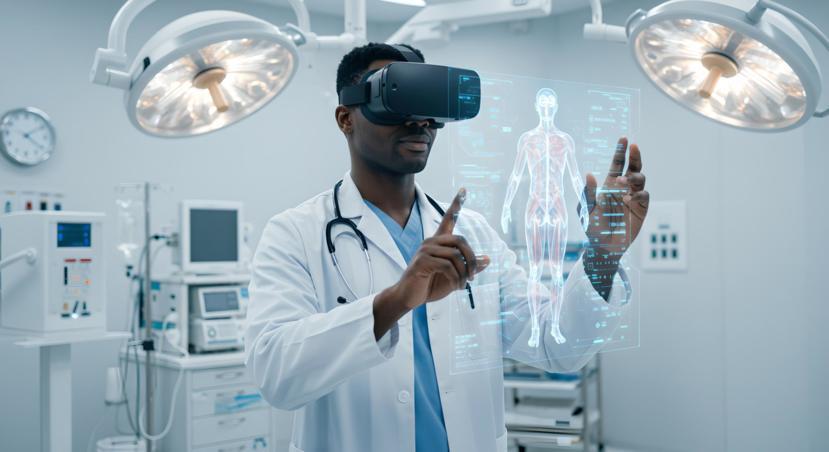7 Reasons Simulation Training Is So Important for Medical Students

Neha Gurvinder is a top Medical Researcher in Enid, Oklahoma. With a passion for the field and an unwavering commitment to their specialty, Neha Gurvinder is an expert in changing the lives of their patients for the better. Through their designated cause and expertise in the field, Neha Gurvinder is a prime example... more
In the high-stakes world of medicine, preparation isn’t just valuable - it could literally mean life or death. And, as the complexity of healthcare grows, the margin for error is shrinking even further.
As a result, more and more medical schools are turning to simulation training as a cornerstone for medical education.
What is simulation training?
Simulation-based learning replicates clinical scenarios in a controlled environment whilst making them feel as close to the real thing as possible.
Doing this allows students to hone critical skills like decision-making, as well as practical skills like CPR, bleeding control and more, without endangering real patients.
From mastering technical procedures to strengthening their communication skills, simulation-based learning is transforming how future healthcare professionals learn and practice.
Keeping that in mind, we’re going to take a deeper look at seven reasons why simulation training is so important for medical students.
1. It offers a safe environment where they can learn from mistakes
Medical students are only human, and they can make mistakes, particularly in the early years of their training. In traditional clinical settings or trauma situations, these mistakes can have serious consequences.
However, simulation training offers a risk-free space where they can make and learn from their mistakes without harming real patients.
Whether it’s inserting a central line, suturing, giving CPR or trying to handle a difficult patient in a traumatic situation, students can practice repeatedly until they get it right. This freedom without real consequences can help them to build confidence and accelerate the learning process.
2. It can help to bridge the gap between theory and practice
Medical education begins in the classroom, but the real-world application of these skills is where their knowledge truly solidifies.
The trouble is, there is often a big gap between theory and practice, but simulation training serves as a vital bridge between academic study and clinical experience.
These task trainers and life-like scenarios make it possible for students to apply what they've learned in physiology or pharmacology to realistic patient scenarios, reinforcing their understanding of the procedure and skills needed in a dynamic and memorable way.
This is because learning through experience is proven to enhance knowledge retention and clinical reasoning skills far more effectively than lectures alone.
3. It improves their technical and procedural skills
There are certain clinical procedures that require fine motor skills and precise hand-eye coordination with specialised equipment. So, as you can imagine, tasks like suturing, intubation, catheterisation or laparoscopic surgery are not easily learned through textbooks or lectures.
That is why simulation labs are crucial. They often feature advanced manikins, virtual reality systems and task trainers that mimic human anatomy and physiology as closely as possible.
These tools allow students to practice and perfect their technique - again, without risking anyone’s health - usually providing them with immediate feedback through computer monitoring or instructor critique.
4. It enhances their communication and teamwork
Most healthcare delivery is not a solo task and requires a collaborative effort from multiple professionals, such as doctors working seamlessly with nurses, pharmacists, technicians and other team members to offer the best possible patient care.
Simulation scenarios are often chosen as they can incorporate multiple roles, requiring students to practice effective communication, leadership and teamwork with other relevant medical professionals.
For example, in a simulated code blue situation, a student might take the lead in resuscitating a patient while coordinating with a team of nurses. These exercises promote situational awareness and can help to sharpen interpersonal skills, which are crucial in real clinical environments and emergencies.
5. It boosts preparedness for real-world emergencies
High-stakes situations, such as cardiac arrest, trauma, or anaphylaxis, are not always commonplace in clinical rotations as these are unpredictable, traumatic events. As a result, medical students may not be faced with these on a regular basis, depending on their role.
Through simulation-based learning, they will gain more frequent exposure to these critical scenarios. This can prepare students to respond swiftly and correctly when under pressure in a real-world emergency.
In fact, rehearsing these events through a simulated situation enables them to build the kind of muscle memory and calm focus that can be life-saving in an actual emergency.
6. It provides clearer, objective assessment and feedback opportunities
Another key challenge of traditional clinical education is the subjectivity of assessment. Sure, students can take a test and answer questions about how they should respond in certain scenarios, but this doesn't prove that they can actually apply their new skills.
However, simulation training offers standardised scenarios and clearer metrics for performance evaluation. Instructors can assess the decision-making, procedural accuracy, communication and adherence to protocols of each student as they participate.
Many simulation programs will also include video playback, allowing students to review their own performances. This can be beneficial for identifying their own mistakes and reflecting on how they can improve in the future.
This immediate, objective feedback loop is invaluable for the growth and accountability of medical students.
7. It promotes lifelong learning and adaptability
Finally, the medical field is in constant flux. There are always new diseases, technologies and treatments emerging, and simulation training encourages a mindset of continuous learning and adaptability.
As students become accustomed to rehearsing new procedures or protocols in simulated environments, they are better prepared to adapt to innovations and other unfamiliar situations throughout their careers.
This resilience is critical in a profession where change is constant, and the stakes couldn't be higher.
The importance of simulation training in the medical industry
There’s no denying that simulation training is revolutionising medical education for the better, enabling students to practice, reflect and grow in ways that traditional classroom learning cannot match.
It creates a safe, structured and immersive environment where future doctors can develop their skills without fear of causing harm. Of course, it’s not just technical competence they can work on either, but also confidence, communication and critical thinking skills.
By embracing simulation-based training, medical schools are not just teaching students to be good clinicians; they’re preparing them to be great ones who will succeed long into the future no matter what changes.








